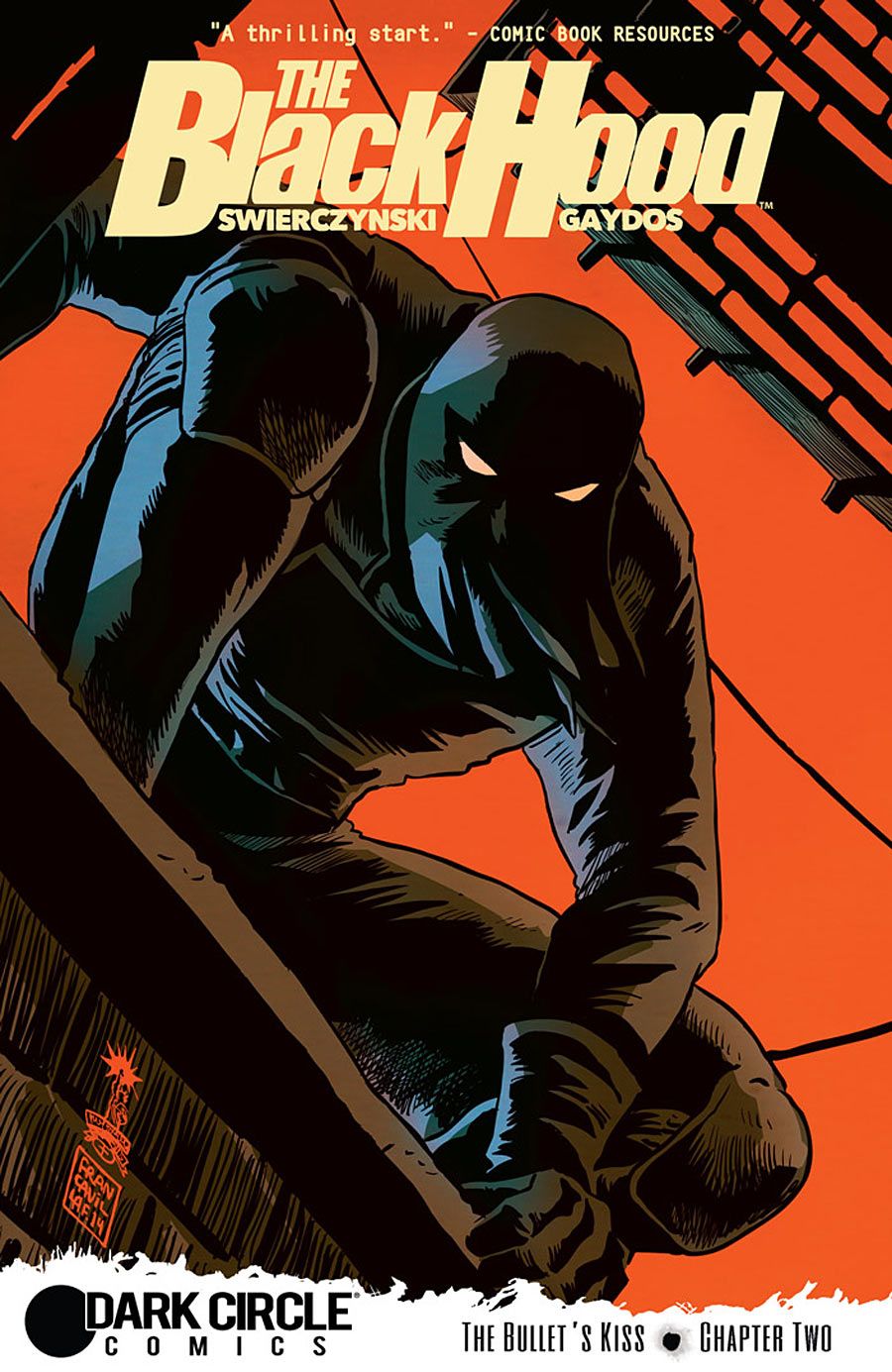Picking up exactly where last issue left off, highway patrolman-turned-vigilante Greg Hettinger undertakes his first unplanned mission by literally diving into a mugging in Duane Swierczynski and Michael Gaydos' "Black Hood" #2. Swierczynski continues the development -- and downward spiral -- of Hettinger's character, which is largely the strength of the issue, but drags it down and convolutes the story with a plot against the new Black Hood before there's really much of a chance to see him established as a figurehead. Despite the shift in the story's focus, though, both Swierczynski and Gaydos evoke a darker and seedier mood, showing that being called a hero isn't necessarily the same as being heroic.
The story of Hettinger's decline, brought about by a shooting on the job that left him disfigured and with an ever-increasing addiction to painkillers, has been an engaging one. There has been the curious dynamic of Hettinger's rise as the Black Hood and the abuse of his duties as a police officer while he sits alone and strung out in his living room during all the moments in between. Swierczynski has made Hettinger connect with readers as a man suffering as he plunges himself into darkness; however, in doing so, he forgets to establish much of a connection with his other roles.
The mugging that Hettinger brutally stops at the beginning of the issue is an intended blurring of the line between lawful cop and vigilante but, subsequently, there is no real conflict resulting from this. Hettinger's tactics as both a cop and a hooded mystery man are both excessively violent and he goes after the bad guys in both situations but, whether he's wearing a hood or a patrolman's helmet, there is no apparent difference between the two identities outside of his uniform.
The Black Hood is apparently causing a lot of trouble for the underworld's drug lords because, well, they say so. A drug kingpin, a lawyer, an opportunistic TV news reporter and a couple of thugs all conspire to bring down the Black Hood because of it, but the shift from more firmly establishing Hettinger's role to a new plot that seeks to eliminate it is an unwelcome intrusion. These characters might have seen enough of the Black Hood, but readers have not; as laid out up to this point, the character seems more akin to Darkman without the synthetic skin or the Punisher without the family that he's lost. There's no real hook to this street justice vigilante, other than he seems to get his strength and courage from Oxycontin.
This comic, with its dingy setting in one of Philadelphia's tougher neighborhoods and all its seedy undertones, is perfect for Gaydos' grimier style. Every fist to the jaw -- or face to a brick wall -- is addressed with the appropriate amount of blood, dirt and grit. The police locker room is dark and dirty and even an elegant restaurant bleeds with a certain degree of sleaziness. Colorist Kelly Fitzpatrick plays her role making the streets of Philly look like the kind of place that needs a hero; even Hettinger's flashbacks to the brighter days of his childhood look muted and anything but bright. Gaydos' layouts choreograph all of the violence like a set of strategically taken still shots but are realistically rendered without being photorealistic.
"The Black Hood" #2 suffers from stepping back on the development of the main character, but remains a decent chapter in the story of a decidedly unheroic hero figure.

